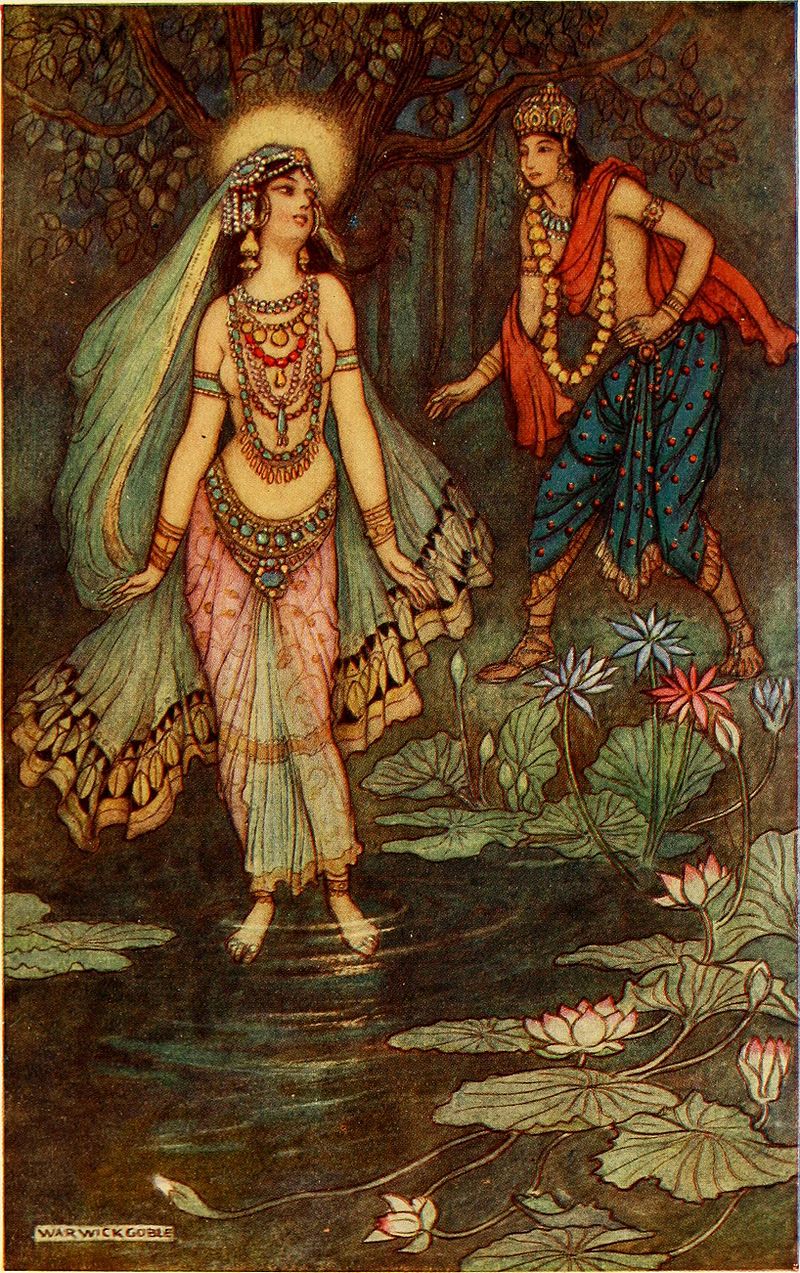Inspiring Young Readers
 posted on 28 Nov 2016
posted on 28 Nov 2016
Warwick Goble
A couple of years ago I bought a first edition copy of Folk Tales of Bengal illustrated by Warwick Goble as a birthday present and this was really the first time I’d looked at any of his work in detail. What struck me straight away was the clear influence of artists such as Edmund Dulac and Walter Crane – two illustrators I really love – and this was enough to convince me that searching out other examples of Goble’s work would be a good idea.

Warwick Goble was born in London in 1862 into a lower middle-class background and his artistic training came from attending Westminster School of Art. During his time as a student he also worked for a publisher specialising in new techniques of colour printing - chromolithography – and got the opportunity to submit drawings to a range of popular magazines and periodicals, including the famous Strand and Boys Own Paper.

The latter years of the 19th century were a golden period for children’s illustration as colour processes made it possible to produce the high quality, vibrant watercolours that were Goble’s forte. He made a name for himself illustrating the magazine serialisation of H.G. Wells’ War of the Worlds using a very different style and by the time the new century began this versatility meant he was well established as a magazine and book illustrator.
In 1909 he became the resident illustrator for Macmillan’s Gift Books and produced his own version of The Water Babies and Green Willow and Other Japanese Fairy Tales which demonstrated that he was more than just a copyist of Dulac and that he was developing his own very particular style. The fashion for everything Japanese found its way into Goble’s work but he was interested in a much wider Eastern pallet and Folk Tales of Bengal followed in 1912.
The First World War interrupted Goble’s career and for a while he stopped producing illustrations and went instead to work in the drawing offices of the Woolwich Arsenal and later he also went to France as a volunteer Red Cross operative. Although he returned to book illustrating at the end of the war and produced a version of Stevenson’s Treasure Island and Kidnapped, by 1929 he was done with drawing and spent the rest of his time in various leisure pursuits until he died in 1943.

Although his name wouldn’t have been one I immediately thought of before I bought Folk Tales of Bengal, his work is certainly part of that golden age of illustration in the late Victorian and Edwardian period before the outbreak of war in 1918. I think there’s also a case to be made that the watercolour style he developed belongs broadly to the Aesthetic Movement that was so influenced by the artistic sensibility of Japan and the far East as well as clearly showing the imprint of other successful book illustrators of the day such as Dulac, Crane and even Heath Robinson.

Copies of the books he illustrated are not that hard to find in reprint but I have to say that quite often the quality of the colour printing and the paper they are reproduced on leave a lot to be desired. That’s unfortunate because the first editions of his books are now pretty expensive to buy – often running into high three figures and beyond.
Terry Potter
November 2016
